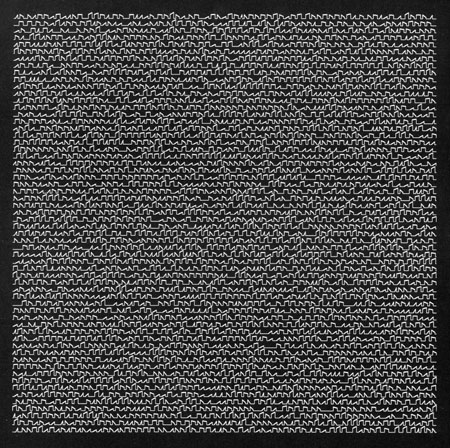
This is an example of Mohr's work which he describes as follows:
Lines touching the horizontal base line are associated to the numbers 0-9. Lines which do not touch the horizontal base line and therefore are between 2 vertical lines are associated to the letters of the alphebet A-Z. In P122 letters and numbers are chosen randomly, thus creating a random text.
Mohr's thinking about a process of coding is very similar to mine. In my case though, content is equally important addressing questions of the nature of our language.
You can view more of Mohr's works here: http://www.emohr.com/ww4_out.html


